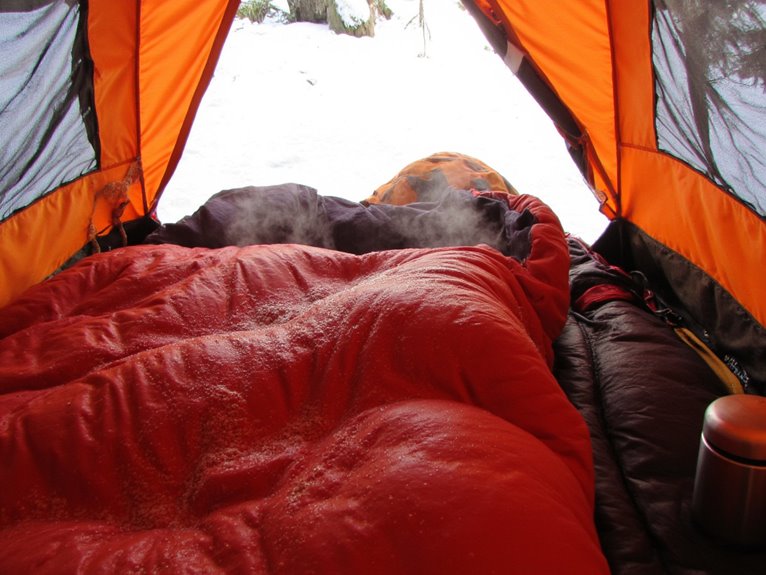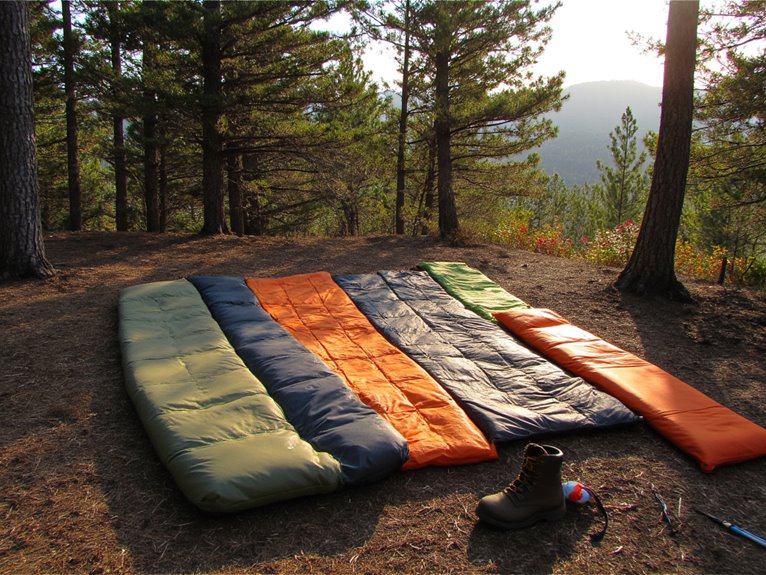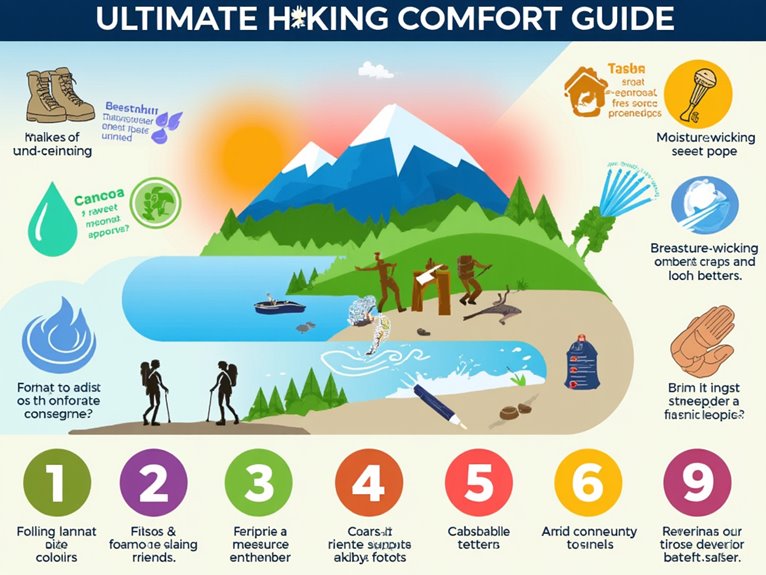How Big Are Army Rucksacks?
Army rucksacks vary in size, ranging from compact 10-20 liter assault packs to large 60-80 liter backpacks designed for extended missions. Medium-sized rucksacks, offering 30-40 liters of capacity, provide a balance between versatility and bulk. Larger rucksacks, including those for cold weather and mountain warfare, offer ample space for gear and supplies. Modular designs allow for customization, while heavy-duty rucksacks are engineered for demanding operations. From quick missions to long-range reconnaissance, each type of rucksack is tailored to meet specific military needs. As you delve into the world of army rucksacks, you'll uncover the nuances and details that make each one unique.
We are supported by our audience. When you purchase through links on our site, we may earn an affiliate commission, at no extra cost for you. Learn more. Last update on 22nd December 2025 / Images from Amazon Product Advertising API.
Assault Packs: Compact and Lightweight
Designed for rapid deployment and versatility, assault packs prioritize compactness and lightness, allowing soldiers to move swiftly and efficiently in high-stress environments.
These packs are typically designed to carry essential gear, such as ammunition, first aid kits, and communication devices, while minimizing bulk and weight.
Assault packs usually have a capacity of 10-20 liters, making them ideal for short-duration missions or reconnaissance operations.
Their compact size enables soldiers to navigate through dense terrain or urban environments with ease, providing a tactical advantage in high-pressure situations.
Medium Rucksacks for General Purpose
While assault packs are ideal for short-duration missions, medium rucksacks for general purpose offer a higher capacity and versatility for longer operations or deployments that require a broader range of equipment.
These rucksacks typically have a capacity of 30-40 liters, providing ample space for carrying essential gear, clothing, and supplies.
Their design allows for efficient packing and organization, with multiple compartments and pockets to keep items separate and easily accessible.
Medium rucksacks are also designed to be durable and comfortable, with padded shoulder straps and waist belts to distribute the weight evenly.
They are suitable for a wide range of military operations, from patrols to reconnaissance missions, and can be easily adapted to meet the specific needs of the user.
Large Rucksacks for Extended Missions
Large rucksacks for extended missions offer an even greater capacity, typically ranging from 60-80 liters, to accommodate the extensive gear and supplies required for prolonged deployments or special operations.
These large rucksacks are designed to support soldiers on extended missions, providing ample space for food, water, and other essential items.
Key features of large rucksacks include:
- Multiple compartments and pockets for organized storage
- Reinforced materials and stitching for durability
- Padded shoulder straps and waist belts for comfort
- Integrated hydration systems and MOLLE compatibility for customization
These features enable soldiers to carry heavy loads over extended periods, ensuring they remain effective and efficient in the field.
Extended Cold Weather Rucksacks
Soldiers operating in cold weather environments require specialized gear,
and extended cold weather rucksacks are engineered to meet the unique demands of winter warfare, providing insulated compartments and thermal protection to keep essential supplies from freezing.
These rucksacks are designed to withstand extreme temperatures, often dropping below -20°C (-4°F), and are constructed with water-resistant materials to prevent moisture ingress.
Key features include insulated hydration compartments, thermal-lined pockets, and reinforced seams to prevent cold-induced cracking.
The rucksacks' capacity ranges from 60 to 80 liters, allowing soldiers to carry essential gear, such as cold-weather clothing, first aid kits, and communication equipment, while maintaining mobility and agility in harsh winter environments.
Specialized Rucksacks for Mountain Warfare
When operating in mountainous terrain, specialized rucksacks are designed to facilitate efficient navigation and mobility in challenging environments.
These rucksacks typically feature reinforced materials and ergonomic design to distribute weight evenly, allowing soldiers to traverse rugged landscapes with ease.
Additionally, they often incorporate dedicated compartments for storing cold-weather gear, ensuring soldiers can quickly access essential equipment in extreme weather conditions.
In the rugged, high-altitude environments of mountainous terrain, specialized rucksacks are designed to meet the unique demands of mountain warfare, where traversing steep slopes, snow, and ice requires equipment that is both durable and adaptable.
To navigate these challenging environments, mountain warfare rucksacks often feature:
Reinforced materials and construction to withstand harsh weather conditions
Multiple compartments and pockets to organize and access gear quickly
Integrated straps and attachment points for securing equipment, such as ropes and crampons
Weather-resistant zippers and seams to keep gear dry and protected
Cold-Weather Gear Storage
Effective cold-weather gear storage is critical in mountain warfare, as it enables troops to rapidly access and deploy essential equipment, such as cold-weather clothing, avalanche probes, and first aid kits, in extreme environments.
Specialized rucksacks designed for mountain warfare often feature dedicated compartments and pockets to keep gear organized and easily accessible.
For instance, some rucksacks have insulated pockets to store cold-weather clothing, while others have mesh compartments to dry wet gear.
Additionally, these rucksacks often have MOLLE (Modular Lightweight Load-carrying Equipment) attachments, allowing troops to customize their gear setup according to their mission requirements.
Long-Range Reconnaissance Packs
Long-range reconnaissance packs, designed for covert operatives and special forces, typically boast a capacity of 60-80 liters to accommodate extended missions in hostile environments.
These packs are engineered to carry heavy loads while maintaining a low profile, allowing operators to move undetected in high-risk areas.
Key features of long-range reconnaissance packs include:
Multiple compartments and pockets for organized storage of mission-critical gear
Reinforced materials and stitching for durability in harsh conditions
Modular design for customization to meet specific mission requirements
Integrated hydration systems for extended operations
Patrol Packs for Quick Missions
In regard to patrol packs for quick missions, two critical factors come into play: load capacity and compact design.
A patrol pack must be able to carry essential gear while minimizing bulk, allowing soldiers to move swiftly and unencumbered.
Load Capacity Matters
Optimizing load capacity is vital for patrol packs, as it directly impacts the success of quick missions by allowing soldiers to carry essential gear without hindering their mobility or agility.
A well-designed patrol pack should strike a balance between carrying capacity and mobility.
Load capacity should be tailored to the specific mission requirements, ensuring soldiers carry only what is necessary.
The pack's internal compartmentalization should be designed to keep gear organized and easily accessible.
The weight distribution should be evenly spread to minimize fatigue and discomfort.
The pack's exterior should be designed to allow for easy attachment and detachment of additional gear, such as water bottles or first aid kits.
Compact Design Essentials
A patrol pack's compact design is critical for quick missions, as it enables soldiers to move swiftly and unencumbered while still carrying essential gear.
Compact patrol packs typically have a capacity of 10-20 liters, allowing soldiers to carry only the most critical items.
Key features of compact patrol packs include multiple compartments, MOLLE (Modular Lightweight Load-carrying Equipment) attachment points, and durable, water-resistant materials.
These design elements enable soldiers to access essential gear quickly and efficiently, while minimizing bulk and weight.
By prioritizing compact design, soldiers can move quickly and effectively, without being hindered by unnecessary equipment.
This streamlined approach enables successful completion of quick missions, where speed and agility are paramount.
Heavy-Duty Rucksacks for Engineering
Engineers in the field require heavy-duty rucksacks that can withstand the rigors of demanding projects, carrying bulky equipment and supplies over long distances.
These rucksacks must be designed to meet the unique needs of engineers, providing ample storage space, durability, and comfort.
Key features of heavy-duty rucksacks for engineering include:
- Reinforced materials and stitching to guarantee durability
- Multiple compartments and pockets for organized storage
- Padded shoulder straps and back panels for comfort
- Weather-resistant materials to protect equipment from the elements
Modular Rucksacks for Customization
Modular rucksacks for customization offer a versatile alternative to heavy-duty rucksacks, allowing engineers to tailor their gear to specific project requirements and adapt to changing circumstances.
These adaptable backpacks typically feature removable and interchangeable compartments, allowing users to reconfigure their loadout as needed.
This modular design enables engineers to optimize their gear for specific tasks, reducing unnecessary weight and bulk.
Additionally, modular rucksacks often feature MOLLE (Modular Lightweight Load-carrying Equipment) attachment points, allowing users to easily add or remove pouches, holsters, and other accessories as required.




